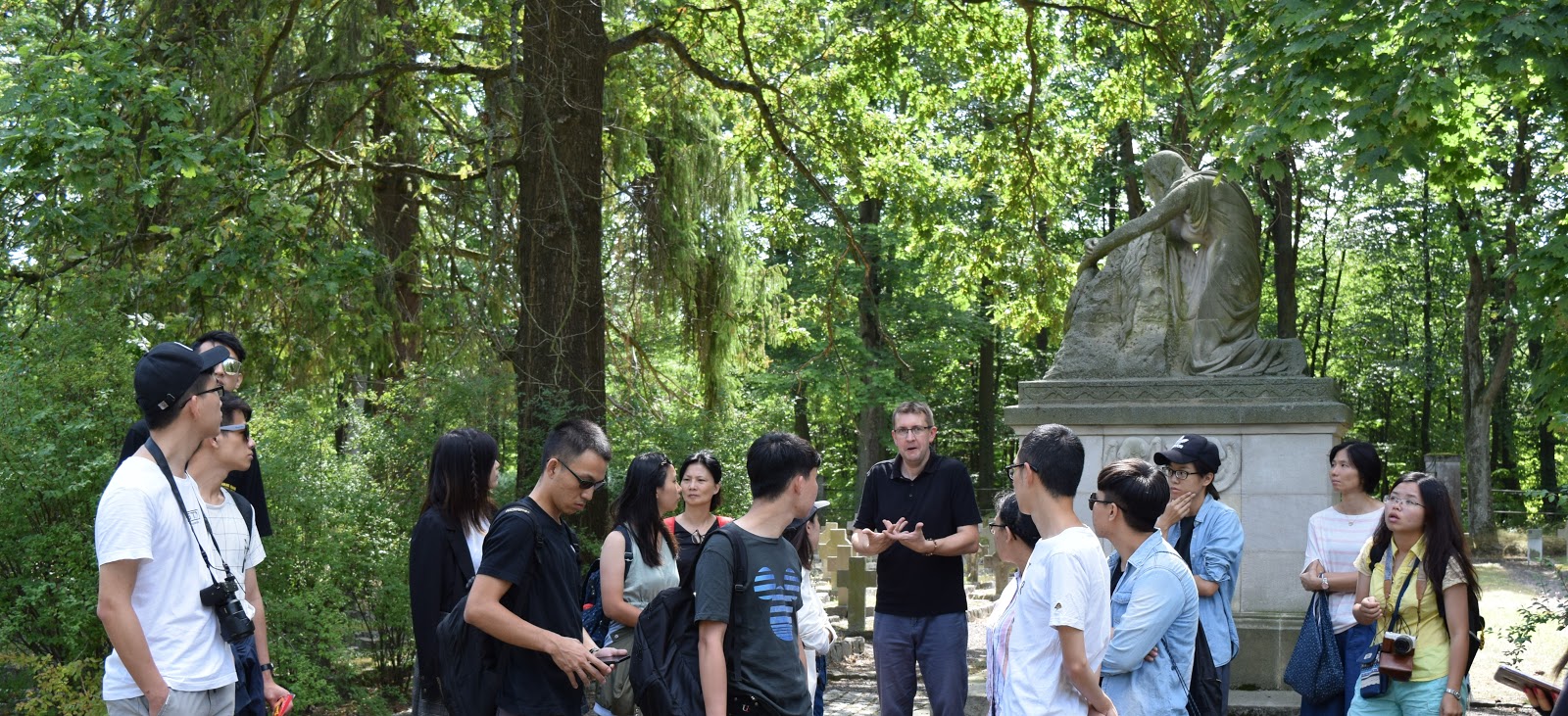At Moving.lab one of our goals is to increase cultural interactions and to encourage the pursuit of knowledge, visiting museums and learning about history is one of the better ways to accomplish that goal. That’s why our partners at Opole University organised a trip for the Taiwanese students to the Central Museum of Prisoners of War in the beautiful town of Łambinowice, formerly known as Lamsdorf.
Upon arrival at the museum, the students watched a short documentary about the history of the camp and the museum. After that they met with Dr Anna Czerner who guided their tour. Before starting the tour, she asked them to identify signs of violence and reconciliation around the museum and the camp. This task will be helpful in the students’ next workshop about “Violence and reconciliation” in Opole. After that, Sebastian led the students on a tour of the museum, gave broad knowledge about the history of the camp and told stories that happened in the camp.
Then we started the second part of our tour, on bikes provided by the museum and rode to the historic cemetery. The Old POW Cemetery is even older than WWI and belonged to Germany until the end of the second WW. And that’s why it was designed as a classical German cemetery; close to nature. They were graves of soldiers of many different nationalities; British, French, Romanian, Russian… And each nation has its own memorial statue except Romania. Sebastian told us the meaning behind the statue named Niobe which was dedicated to Serbian soldiers and the families they left behind.
After looking for symbols of violence and reconciliation around the cemetery we headed for the camp itself. Although the camp has been mostly destroyed after WW2, they are few buildings remaining and reconstructed for the museum. The realities of the prisoners of war were described; what they ate, when and where they slept, what they did and how they coped with being prisoners of war.

